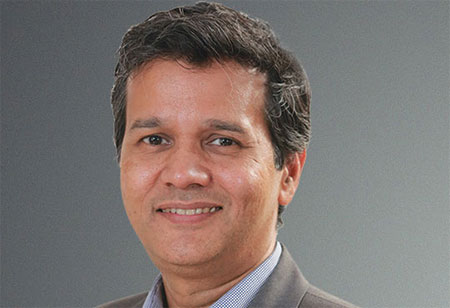By Upanga Dutta, Chief Marketing Officer, Telenor (India) Communications

Upanga Dutta, Chief Marketing Officer, Telenor (India) Communications
The growth of Internet and smartphone has impacted the way we live our lives and communicate with each other. From being consumers of content on the web, we have transformed ourselves into digital natives. With the rise of social media, messenger services, music, pictures and video services, and a lot more online activities have got integrated with real time campaigns and personalization. And all this is impacting the way companies conduct business and communicate with their customers. These changes provide an exciting pool of challenges and opportunities that marketers can take advantage of and help make their organization stay ahead of competition.
As service providers, telecom companies are at the center of this change. Till now carriers gave vanilla access to mobile data. Increasingly, however, there is a realisation that they cannot function only as an infrastructure provider to deliver Internet and control its speed. A Teleco’s success comes from a strong physical distribution capability and their strength is in the wealth of consumer data that gets generated every moment. With analytics it is getting easier to understand the online behavior of the consumers. The results can be used to offer digital platform for advertising, distribution of content or even develop digital channels to enhance and personalize customer experience.
On the other hand, companies are realizing that calculating returns on investment for traditional marketing channels is a challenge. Now here is an opportunity to actually measure the impact, the reach and effectiveness of the campaign, and also be specific in their messaging. Not surprising then that many consumer facing companies have now created space in the boardroom for the ‘chief digital officer’. The job profile demands a unique blend of understanding technology and marketing knowledge.
Fastest Growing Segment among Marketers
According to Morgan Stanley, India spent almost $1 billion on digital advertising in 2015. This was 13 percent of the total advertising spend in the country and was the fastest growing segment in the ad world. In the next four years, digital advertising will cross $4 billion and is expected to capture around 26 percent share of the total Indian advertising market by 2020. Why? Because that is where consumers are spending most of their time – on the internet and on their mobile phones.
The Fight for User Attention
Global estimates show that consumers spend around 200 minutes a day on their mobile handset and over 80 percent of this time spent is within mobile apps. This consumer is price conscious and is impatient. He expects the digital experience and information to be what he wants it to be, when he wants it to and it has to be relevant. For the mass market in India, where a majority of consumers are experiencing internet and online services for the first time on their mobile, insights into factors influencing their decision making journey and usage behaviors will define which side digital marketing will move.
An important element, which is often ignored, is around spreading awareness in digital services. As the focus shifts to semi-rural and rural markets, customers need to be educated and made comfortable in using Internet services, apps and enjoy the benefits accruing from this. At Grahak Siksha Kendras (GSKs) a customer can learn about using basic data services like internet, social media, etc., and know how to be safe when online. GSMA has tied up with operators like Telenor India to engage in strengthening the effort of Digital Literacy by putting together Mobile Internet Skills Training Toolkit (MISTT) which makes it easy to acquire these specific skills and knowledge to use a mobile phone effectively.
Global acquisitions like that of the Silicon Valley start-up Tapad by Telenor Group earlier this year only reinforces the trend of mobile carriers moving deeper into advertising technology. These acquisitions create a solid position within advertising and marketing technology and strengthen a telecom operator’s data analytics capabilities significantly. Telecos have previously taken positions within new digital business areas within the Internet of Things, Online Classifieds and Financial Services. Now they are shaping their ambition to deliver a broad range of relevant, personalized and engaging digital services for customers, as well as to improve efficiency by further digitizing core business, including important areas like sales, marketing and distribution.
A Multi-Pronged Approach
Digital marketing and distribution capabilities will continue to become more valuable as business drivers in Indian context due to rapid adoption of smart phones and expansion of high speed data network roll out along with government push for digitization. Also, given the nature of online marketing, the challenge is to master capabilities that are relevant to enhance every element of customer digital journey. A Teleco has the data and it is using analytics to meaningfully utilize it but given the ever-changing online world, it is imperative to know which channels to use to get best performance. Ultimately it will move towards an omni-channel approach where organizations need to think of using digital to enhance customer journey at each touch points by leveraging their existing assets as well as adding the new ones.
We use cookies to ensure you get the best experience on our website. Read more...